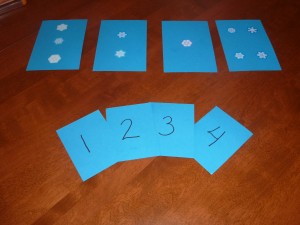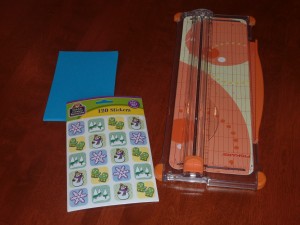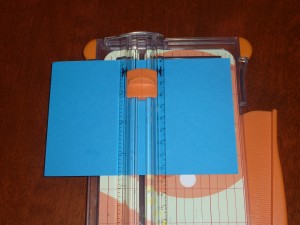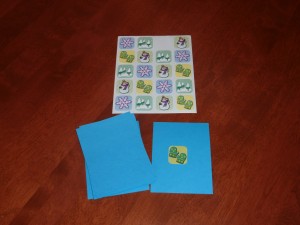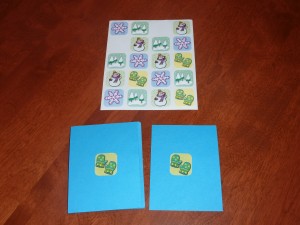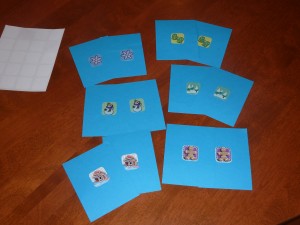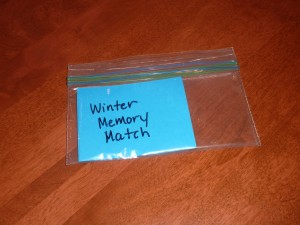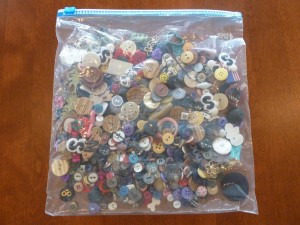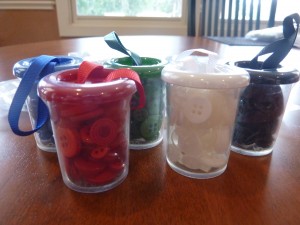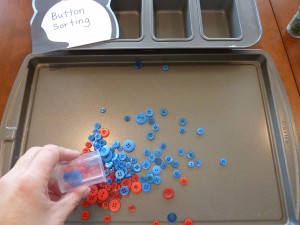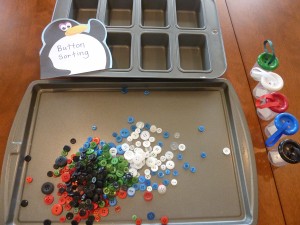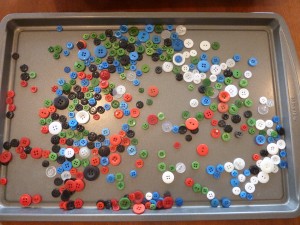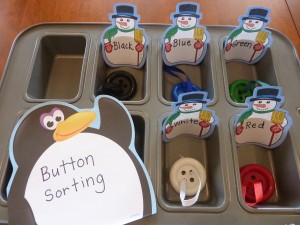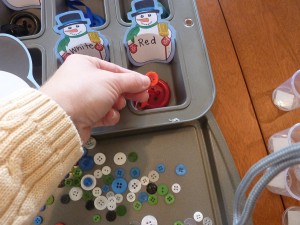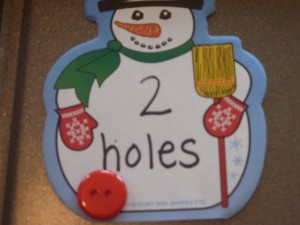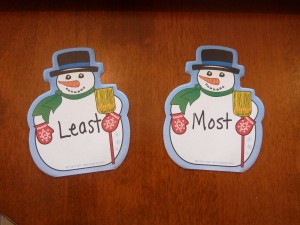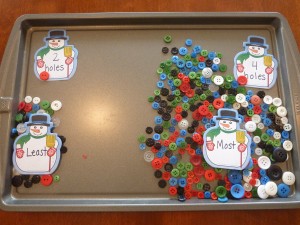Unexpected Find = Fun, Engaging Activity
I was wandering through the aisles of my teacher supply store and saw a package of these droppers in the science section.
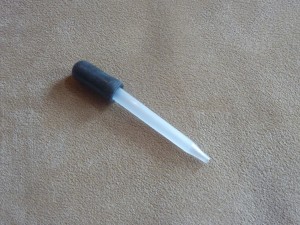
I thought that they would be great to introduce a little bit of experimentation while also building his grasping skills.


My Obstacle Course Station Activity: Experimenting with Color
When teaching kindergarten I always loved teaching about the primary colors (red, yellow and blue) and how to use them to make the secondary colors (orange, green and purple). Â The children were always so excited and amazed as though I were a magician magically creating different colors right before their eyes!
I decided that I would set up a My Obstacle Course station that would combine the droppers with making colors. This station activity was not only easy to set up and take down, it was also a huge hit!  Andrew’s exact words were, “This is fun. It is just like Easter!â€
My Obstacle Course Station Set Up:
- droppers
- food coloring
- 3 small bowls, cups or ramekins with some water
- 3 small bowls, cups or ramekins that are empty
- rimmed cookie sheet to catch spills
- paper towel or old towel to wipe spills and hands
I used one of my rimmed cookie trays (I have to use them for something since I don’t bake!!), some ramekins (If you worry about breaking the ramekins, you could also use small Dixie or plastic cups or bowls.) and added a few drops of red, yellow and blue food coloring in: red, yellow and blue food coloring. I did this part with Andrew so he could also work on stirring but you could do this for them or ahead of time.  It is kind of cool for them to see the water take on the color of the food coloring drops.
We talked about the colors we were seeing as we added and stirred the food coloring. I told him he was going to use the dropper to get some colored water from one bowl, squeeze it into an empty bowl and repeat with a different color.
These are some questions I asked him as we were doing this:
- What do you think is going to happen?
- What color is going to be in the new bowl?
- Which colors combine to make new colors?
- What happens when you add more of one color?



He used the droppers to combine red and yellow to make orange, yellow and blue to make green, and red and blue to make purple. He had a ball experimenting with these colors and had no idea that he was building skills like motor planning, fine motor grasping skills as well as going through the scientific method by questioning, predicting, experimenting and making conclusions based on his personal experience with the materials. All of that AND he was totally engaged and having fun with me.
Engage, Encourage and Empower!



